|
|
|
|
|
|
|
|
|
Award Number and Duration |
|
|
|
NSF IIS 1910733 |
|
|
|
PI and Point of Contact |
|
|
|
Bei Wang |
|
|
|
Overview |
|
|
|
Vector and tensor fields provide a powerful language to describe physical phenomena in many scientific applications. In atmospheric sciences, vectors are used to represent air movements with speed and directions and to capture typical and atypical atmospheric conditions. In materials science, stress and strain tensors are used to specify the behaviors of material bodies experiencing deformations and to facilitate the study of material strength. The main objective of this project is to define and quantify robust features in vector and tensor fields and to derive scientifically meaningful visualization for knowledge discovery. Robust features are objects, structures, or regions of interest that are stable under small perturbations of the data that arise from measurement noise, numerical instability or simulation uncertainty. Robust features are defined and evaluated via close collaborations with domain scientists to help them discriminate spurious from essential structures in the data. In materials science, the extraction of robust features in stress tensor fields will help the materials scientists better characterize and predict 3D cracking for manufacturing stronger materials. In neuroscience, quantifying the robustness of degenerate elements in brain imaging will offer new metrics and visualization in characterizing tissue microstructure for disease diagnostics. In bioengineering, robust vortex extraction and tracking of 3D conduction velocity fields in the heart will help bioengineers develop new metrics that detect and characterize ischemic stress associated with a heart attack. In atmospheric sciences, extracting and visualizing robust features in wind data will help the atmospheric scientists establish situation awareness of hazardous weather conditions such as wildfires and to provide wildfire weather forecasting and resource planning for firefighting personnel. This project will also provide a unique environment for multidisciplinary activities and training opportunities for students in integrating visualization with scientific applications. |
|
|
|
Broader Impacts |
|
|
|
This project will have a large impact on application domains via multidisciplinary collaborations. The extraction and visualization of robust features in stress tensor fields will help the materials scientist better characterize and predict 3D cracking. Quantifying the robustness of degenerate elements will offer new metrics and visualization in characterizing tissue microstructure in neuroscience. In bioengineering, robust vortex extraction and tracking of 3D conduction velocity fields in the heart will help researchers develop new metrics that detect and characterize ischemic stress. Finally, extracting and visualizing robust features across ensemble members will help researchers understand the uncertainty and predictability of an ensemble for reanalysis in wildfire weather forecasting. |
|
|
|
Awards |
|
|
|
Visual Computer Cover of the Year 2023, by Daniel Klötzl, Tim Krake, Youjia Zhou, Ingrid Hotz, Bei Wang, Daniel Weiskopf, 2023. Visual Computer Second Best Paper Award at Computer Graphics International (CGI), 2022. Honorable Mention Paper Award at IEEE Workshop on Topological Data Analysis and Visualization (TopoInVis), 2022. Nithin Chalapathi: Finalist in the Computing Research Association (CRA) Outstanding Undergraduate Researcher Awards, 2021. |
|
|
|
Publications and Manuscripts |
|
|
| Year 4 (2022 - 2023) | |
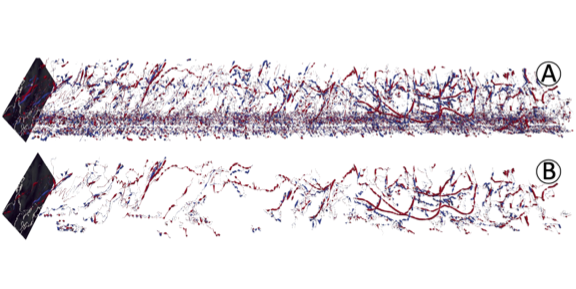
|
 TROPHY: A Topologically Robust Physics-Informed Tracking Framework for Tropical Cyclone.
TROPHY: A Topologically Robust Physics-Informed Tracking Framework for Tropical Cyclone.
Lin Yan, Hanqi Guo, Tom Peterka, Bei Wang, Jiali Wang. IEEE Visualization Conference, accepted, 2023. Supplementary Material. arXiv:2307.15243. |
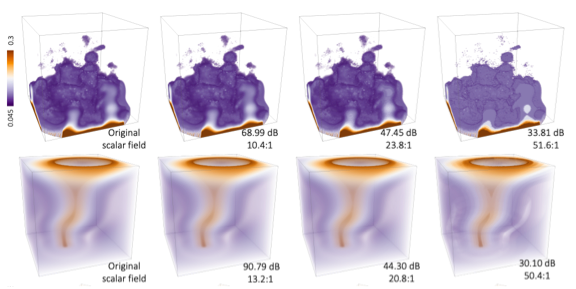
|
 TopoSZ: Preserving Topology in Error-Bounded Lossy Compression.
TopoSZ: Preserving Topology in Error-Bounded Lossy Compression.
Lin Yan, Xin Liang, Hanqi Guo, Bei Wang. IEEE Visualization Conference, accepted, 2023. Supplementary Material. arXiv:2304.11768. |
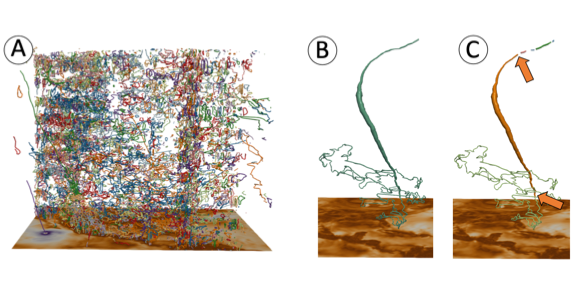
|
 Multilevel Robustness for 2D Vector Field Feature Tracking, Selection, and Comparison.
Lin Yan, Paul Aaron Ullrich, Luke P. Van Roekel, Bei Wang, Hanqi Guo.
Multilevel Robustness for 2D Vector Field Feature Tracking, Selection, and Comparison.
Lin Yan, Paul Aaron Ullrich, Luke P. Van Roekel, Bei Wang, Hanqi Guo.Computer Graphics Forum, 2023. DOI: 10.1111/cgf.14799 arXiv:2209.11708 |
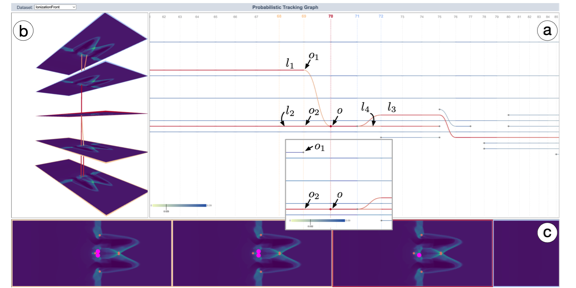
|
 Flexible and Probabilistic Topology Tracking with Partial Optimal Transport.
Flexible and Probabilistic Topology Tracking with Partial Optimal Transport.
Mingzhe Li, Xinyuan Yan, Lin Yan, Tom Needham, Bei Wang. Manuscript, 2023. arXiv:2302.02895. |
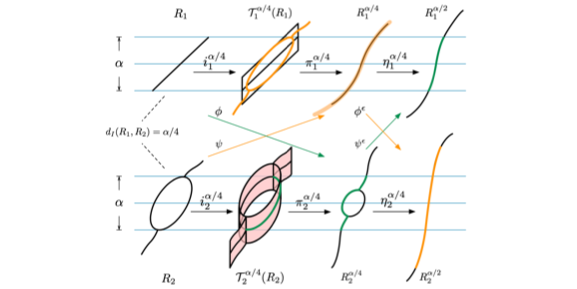
|
 Labeled Interleaving Distance for Reeb Graphs.
Labeled Interleaving Distance for Reeb Graphs.
Fangfei Lan, Salman Parsa, Bei Wang. Manuscript, 2023. arXiv:2306.01186 |
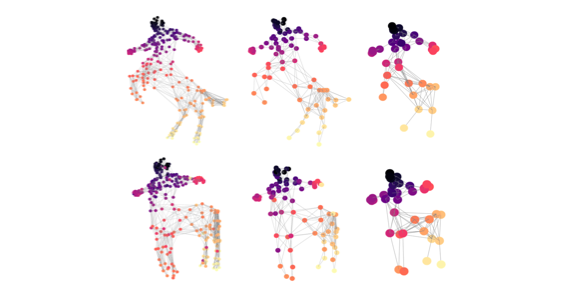
|
 Hypergraph Co-Optimal Transport: Metric and Categorical Properties.
Hypergraph Co-Optimal Transport: Metric and Categorical Properties.
Samir Chowdhury, Tom Needham, Ethan Semrad, Bei Wang, Youjia Zhou. Journal of Applied and Computational Topology, accepted, 2023. arXiv:2112.03904. |
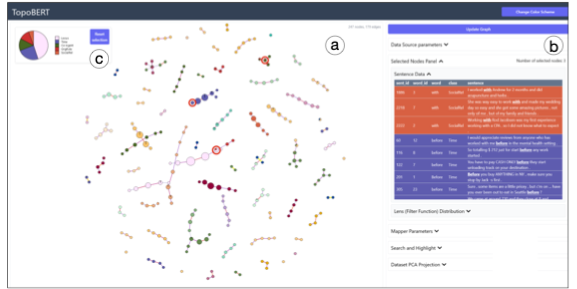
|
 TopoBERT: Exploring the Topology of Fine-Tuned Word Representations.
TopoBERT: Exploring the Topology of Fine-Tuned Word Representations.
Archit Rathore, Yichu Zhou, Vivek Srikumar, Bei Wang. Information Visualization, 22(3), pages 186-208, 2023. DOI: 10.1177/14738716231168671 |
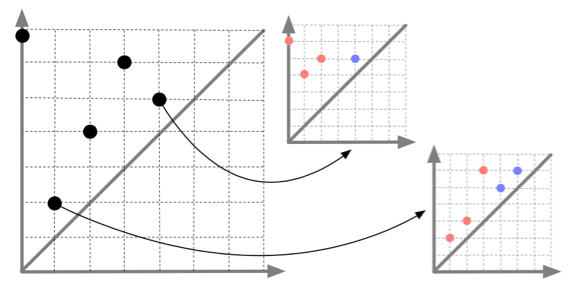
|
 Meta-diagrams for 2-parameter persistence.
Nate Clause, Tamal K. Dey, Facundo Mémoli, Bei Wang.
Meta-diagrams for 2-parameter persistence.
Nate Clause, Tamal K. Dey, Facundo Mémoli, Bei Wang.
International Symposium on Computational Geometry (SOCG), 2023. DOI:10.4230/LIPIcs.SoCG.2023.25 |
| Year 3 (2021 - 2022) | |
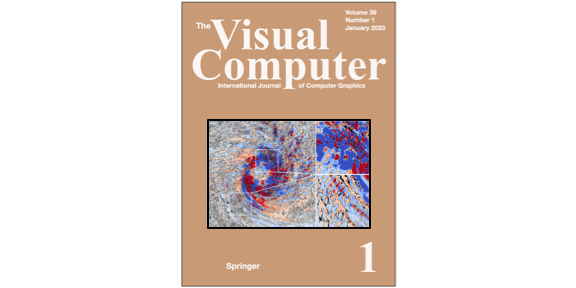
|
 Visual Computer Cover of the Year 2023.
Visual Computer Cover of the Year 2023.
Daniel Klötzl, Tim Krake, Youjia Zhou, Ingrid Hotz, Bei Wang, Daniel Weiskopf. Visual Computer, 2023. Based on Local Bilinear Computation of Jacobi Sets, Visual Computer 38, pages 3435-3448, 2022. |
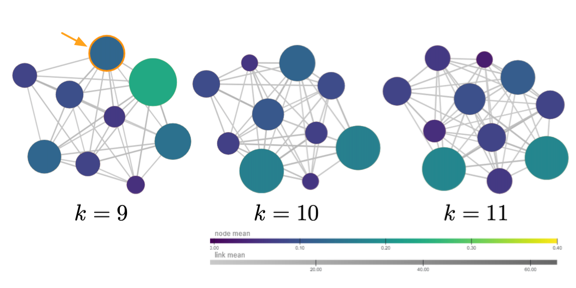
|
 Uncertainty Visualization for Graph Coarsening.
Uncertainty Visualization for Graph Coarsening.Fangfei Lan, Sourabh Palande, Michael Young, Bei Wang. IEEE International Conference on Big Data (IEEE BigData), pages 2922-2931, 2022. DOI: 10.1109/BigData55660.2022.10021039 |
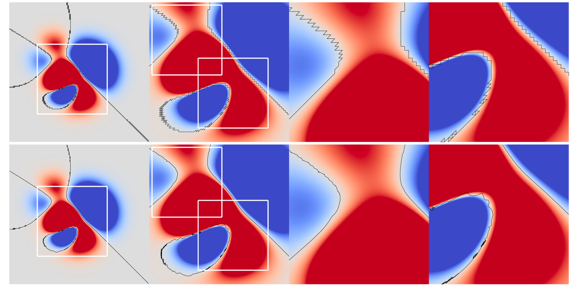
|
 Local Bilinear Computation of Jacobi Sets
Local Bilinear Computation of Jacobi SetsDaniel Klötzl, Tim Krake, Youjia Zhou, Ingrid Hotz, Bei Wang, Daniel Weiskopf. Computer Graphics International (CGI), 2022. Visual Computer, 38, pages 3435-3448, 2022. DOI: 10.1007/s00371-022-02557-4 Visual Computer Second Best Paper Award. |
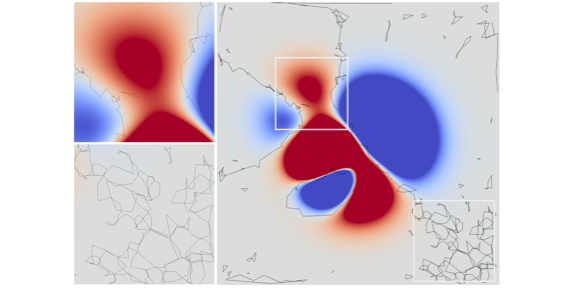
|
 Reduced Connectivity for Local Bilinear Jacobi Sets.
Reduced Connectivity for Local Bilinear Jacobi Sets.
Daniel Klötzl, Tim Krake, Youjia Zhou, Jonathan Stober, Kathrin Schulte, Ingrid Hotz, Bei Wang, Daniel Weiskopf. IEEE Workshop on Topological Data Analysis and Visualization (TopoInVis) at IEEE VIS, 2022. arXiv:2208.07148 DOI: 10.1109/TopoInVis57755.2022.00011 Honorable Mention Paper Award. |
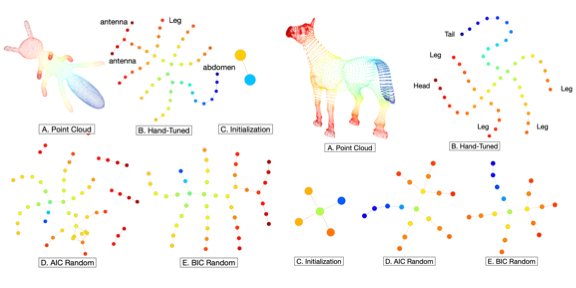
|
 Adaptive Covers for Mapper Graphs Using Information Criteria.
Adaptive Covers for Mapper Graphs Using Information Criteria.Nithin Chalapathi, Youjia Zhou, Bei Wang. IEEE International Conference on Big Data, Workshop on Applications of Topological Data Analysis to Big Data, 2021. DOI: 10.1109/BigData52589.2021.9671324 |
| Year 2 (2020 - 2021) | |
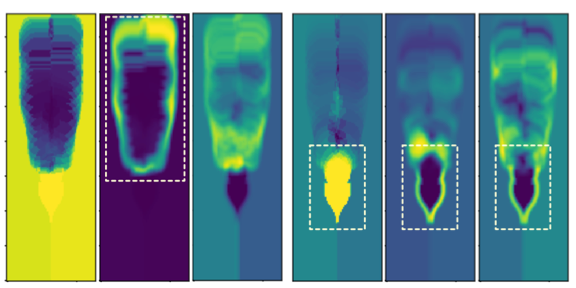
|
 Uncertainty Visualization of 2D Morse Complex Ensembles Using
Statistical Summary Maps.
Uncertainty Visualization of 2D Morse Complex Ensembles Using
Statistical Summary Maps.
Tushar Athawale, Dan Maljovec, Lin Yan, Chris R. Johnson, Valerio Pascucci, Bei Wang. IEEE Transactions on Visualization and Computer Graphics (TVCG), 28(4), pages 1955-1966, 2022. DOI: 10.1109/TVCG.2020.3022359 |
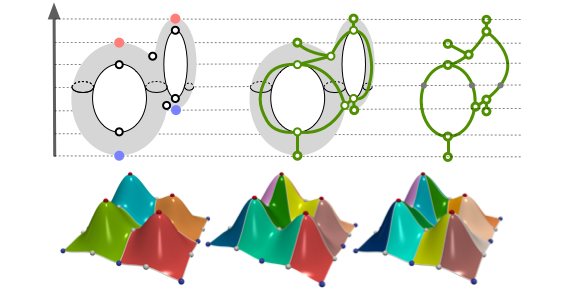
|
 Scalar Field Comparison with Topological Descriptors: Properties and Applications for Scientific Visualization.
Scalar Field Comparison with Topological Descriptors: Properties and Applications for Scientific Visualization.
Lin Yan, Talha Bin Masood, Raghavendra Sridharamurthy, Farhan Rasheed, Vijay Natarajan, Ingrid Hotz, Bei Wang. Eurographics Conference on Visualization (EuroVis), 2021. Computer Graphics Forum, 40(3), pages 599-633, 2021. DOI: 10.1111/cgf.14331 |
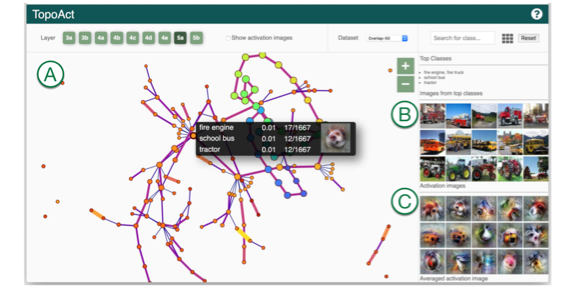
|
 TopoAct: Visually Exploring the Shape of Activations in Deep Learning.
TopoAct: Visually Exploring the Shape of Activations in Deep Learning.Archit Rathore, Nithin Chalapathi, Sourabh Palande, Bei Wang. Computer Graphics Forum, 40(1), pages 382-397, 2021. Supplemental Material. DOI: 10.1111/cgf.14195 arXiv:1912.06332. |
| Year 1 (2019 - 2020) | |
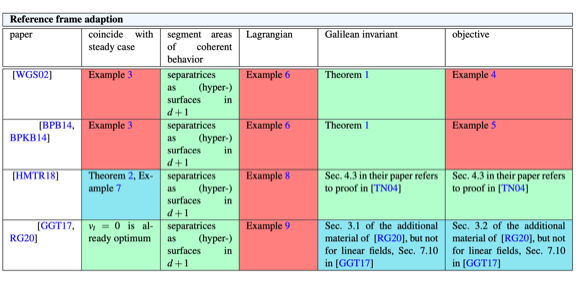
|
 State of the Art in Time-Dependent Flow Topology: Interpreting Physical Meaningfulness Through Mathematical Properties.
State of the Art in Time-Dependent Flow Topology: Interpreting Physical Meaningfulness Through Mathematical Properties.
Roxana Bujack, Lin Yan, Ingrid Hotz, Christoph Garth, Bei Wang. Eurographics Conference on Visualization (EuroVis) STAR Computer Graphics Forum, 2020. DOE: 10.1111/cgf14037 |
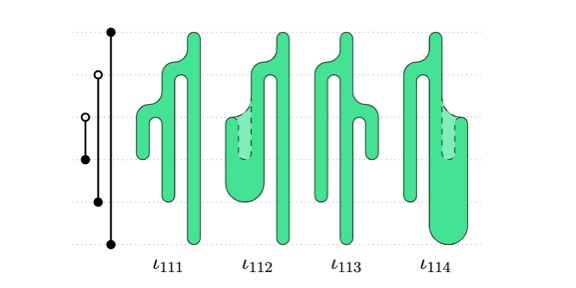
|
 Moduli Spaces of Morse Functions for Persistence.
Moduli Spaces of Morse Functions for Persistence.
Michael J. Catanzaro, Justin Curry, Brittany Terese Fasy, Janis Lazovskis, Greg Malen, Hans Riess, Bei Wang, Matthew Zabka. Journal of Applied and Computational Topology, 2020. DOI: 10.1007/s41468-020-00055-x. arXiv:1909.10623. |
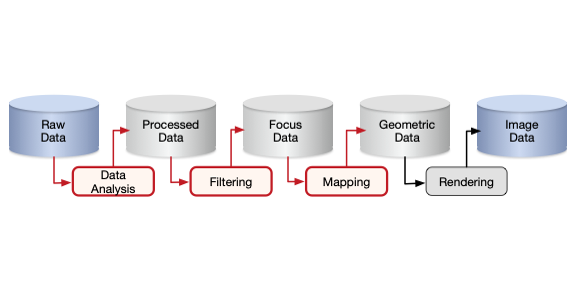
|
 Mathematical Foundations in Visualization.
Mathematical Foundations in Visualization.
Ingrid Hotz, Roxana Bujack, Christoph Garth, Bei Wang. In Foundations of Data Visualization, Springer, to appear, 2020 Editors: Min Chen, Helwig Hauser, Penny Rheingans, Gerik Scheuermann. DOI: 10.1007/978-3-030-34444-3_5. |
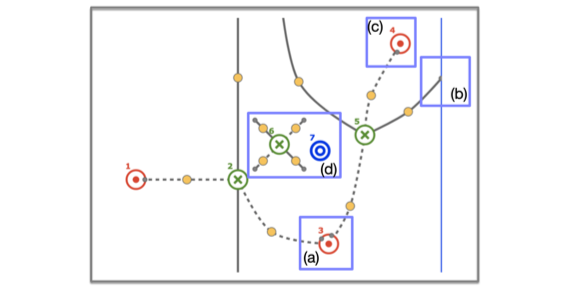
|
 A Visual Exploration and Design of Morse Vector Fields (Abstract).
A Visual Exploration and Design of Morse Vector Fields (Abstract).
Youjia Zhou, Janis Lazovskis, Michael J. Catanzaro, Matthew Zabka, Bei Wang. Algebraic Topology: Methods, Computation, & Science (ATMCS), poster, 2020. Conference cancelled due to COVID-19. |
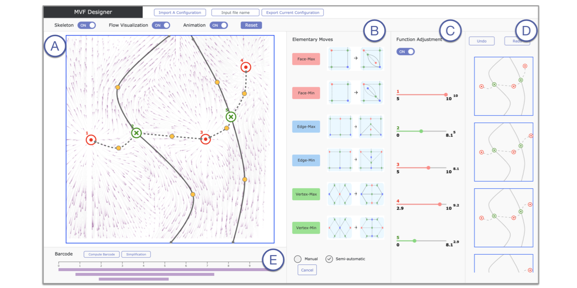
|
 MVF Designer: Design and Visualization of Morse Vector Fields.
MVF Designer: Design and Visualization of Morse Vector Fields.Youjia Zhou, Janis Lazovskis, Michael J. Catanzaro, Matthew Zabka, Bei Wang. Manuscript, 2019. arXiv:1912.09580. |
|
|
|
Software Downloads |
|
|

|
MVF Designer: Design and Visualization of Morse Vector Fields. https://github.com/zhou325/VIS-MSVF MVF Designer is an interactive tool that enables the design and analysis of 2D Morse vector fields via elementary moves. |
|
|
|
Presentations, Educational Development and Broader Impacts |
|
|
| Year 4 (2022 - 2023) |
|
| Year 3 (2021 - 2022) |
|
| Year 2 (2020 - 2021) |
|
| Year 1 (2019 - 2020) |
|
|
|
|
Students |
|
|
|
Current Students Youjia Zhou, PhD School of Computing and Scientific Computing and Imaging Institute University of Utah zhou325 AT sci.utah.edu Former Students Archit Rathore, PhD, defended Summer 2022 School of Computing and Scientific Computing and Imaging Institute University of Utah Lin Yan, PhD, graduated Spring 2022 School of Computing and Scientific Computing and Imaging Institute University of Utah Nithin Chalapathi, BS, graduated Spring 2021 School of Computing Undergraduate RA (REU) University of Utah |
|
|
|
Collaborators |
|
|
|
Current Collaborators Dr. Jacob Dean Hochhalter, Assistant Professor, Department of Mechanical Engineering; University of Utah. Dr. Rob MacLeod, SCI Institute Associate Director; Faculty, SCI Institute; Professor of Bioengineering; Research Associate Professor of Internal Medicine; University of Utah. Dr. Ashley D. Spear, Assistant Professor, Department of Mechanical Engineering; University of Utah. Dr. Pania Newell, Assistant Professor, Department of Mechanical Engineering; University of Utah. Dr. John Horel, Professor, Chair, Department of Atmospheric Sciences; University of Utah. Former CollaboratorsDr. Wenda Tan, Assistant Professor, Department of Mechanical Engineering; University of Utah. Now at University of Michigan. Dr. Christopher Butson, Director of Neuromodulation Research; Faculty, Scientific Computing and Imaging (SCI) Institute; Associate Professor, Department of Biomedical Engineering; University of Utah. Now at University of Florida. |
|
|
|
Acknowledgement |
|
|
|
This material is based upon work supported or partially supported by the National Science Foundation under Grant No.1910733. |
|
|